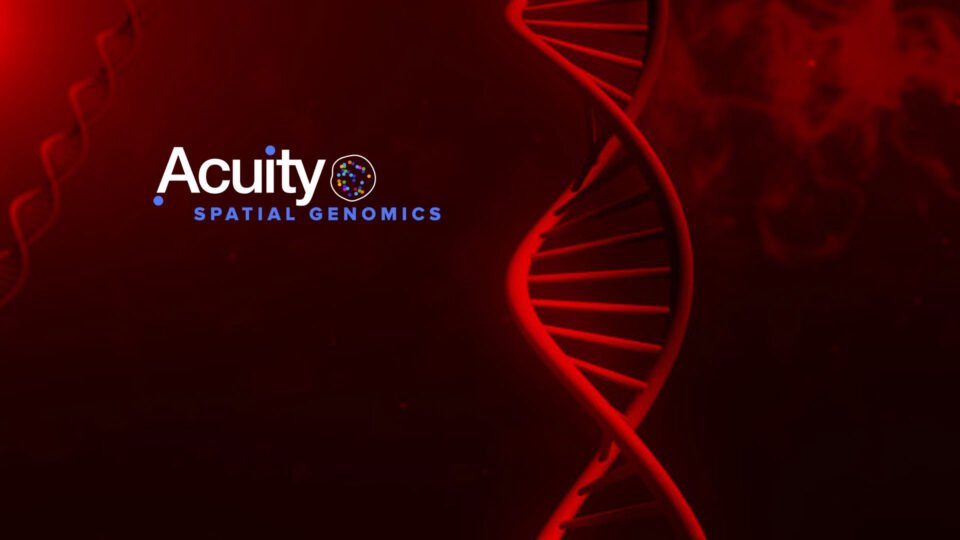Acuity Technology Enables the Possibility to See the 3D Genome in situ and at Single-Cell and Sub-Cellular Resolution
Acuity Spatial Genomics, Inc. today announced the completion of a majority investment by Bruker Corporation (Nasdaq: BRKR). Acuity is a new venture focused on opening a new frontier in spatial 3D genomics and multiomic analyses for discovery. The novel technology platform of Acuity Spatial Genomics, enabled by an exclusive license to innovations from Harvard University, allows progress in genome-wide visualization of spatially resolved 3D chromatin architecture in individual cells and cell populations in situ. The company’s single-cell technology of OligoFISSEQ™ and accelerated super-resolution technology of OligoFISSEQ HD™ will make it possible for researchers to make a range of in situ discoveries—gaining insight into the 3D relationships between chromosomes, gene identities and their spatial position in the nucleus; physical gene positioning on chromosomes; chromosome 3D conformation; chromosome and gene copy number variation; chromosomal compartments, TADs and loops; and spatially resolved enhancer-promoter interactions. These unique spatially resolved genomic measurements and their relationships to information in the transcriptome and proteome provide critical context in understanding the complete multiomic picture.
Acuity Spatial Genomics leverages patented innovations developed in the lab of Ting Wu, PhD, Professor of Genetics in the Blavatnik Institute at Harvard Medical School (HMS). Wu’s lab and her collaborators developed innovations that multiplex Oligopaint pipeline protocols and reagent methods and analysis techniques to create a shorter time-to-result and more cost-effective approach to directly visualize the genome—spatially and in situ. Many aspects of this capability were highlighted in a 2020 publication in Nature Methods. The Harvard Office of Technology Development facilitated the license agreement.
Dr. Wu commented, “Together with our collaborators, we have pursued the mission of chromosome and chromatin structural visualization over several years. I hope that our approach will allow many others to explore and probe the mechanisms of disease and health toward uncovering insights that can transform our understanding and, eventually, treatment of disease.”
The licensed innovations at the core of the OligoFISSEQ and OligoFISSEQ HD technologies will be further developed and commercialized by Acuity Spatial Genomics. The mission for the new company is that, with deeper understanding of 3D chromatin architecture, researchers can gain critical insight into transcription regulatory programs that drive cell type, state, pathogenesis, and function. There is ongoing research today applying spatial biology techniques to the transcriptome and proteome; however, the ability to perform spatial analyses of the genome in situ, in the nucleus, has been limited. Acuity Spatial Genomics brings forward the technologies to allow that—providing much needed direct measurement and visualization of genome organization in situ, at the single-cell and sub-cellular level, in 3D, and where needed, in super-resolution. These genomic insights can help further the understanding of complex questions in oncology, neuroscience, infectious disease, and cell development.
Mark R. Munch, PhD, the President of Bruker Corporation’s Bruker Nano Group, worked to form this venture and will serve additionally as the Acuity CEO. Two postdoctoral members of the Wu Lab—Huy Q. Nguyen, PhD, and Shyamtanu Chattoraj, PhD—are joining the company as cofounders, lending their expertise in the technology to the new venture. Dr. Wu will serve on the Scientific Advisory Board, as will George Church, PhD, Professor of Genetics in the Blavatnik Institute at HMS.
“We are thrilled to form the company and accelerate the pathway for enabling scientific discoveries in basic and translational research leveraging these technologies,” said Dr. Munch. “We have an exciting future and know we will be contributing to significant advances in these fields. I am very pleased to be starting this pioneering endeavor with Huy and Shyamtanu.”
Acuity Spatial Genomics is a new venture supported by Bruker Corporation as part of its strategic investment in spatial biology. Development of the technology at Harvard Medical School was supported in part by a research collaboration between the Wu Lab and Bruker, and Acuity’s transformative spatial 3D genomics platform is part of a larger initiative by Bruker to develop and expand emerging spatial analysis technologies that can empower researchers with the ability to delve deeper and advance discovery in basic life science and translational research.

